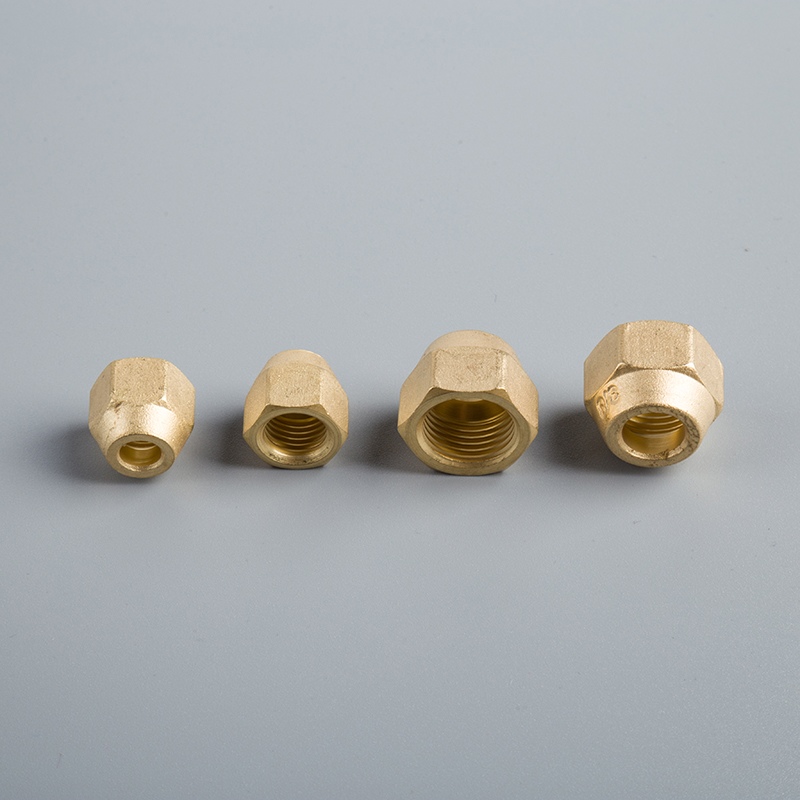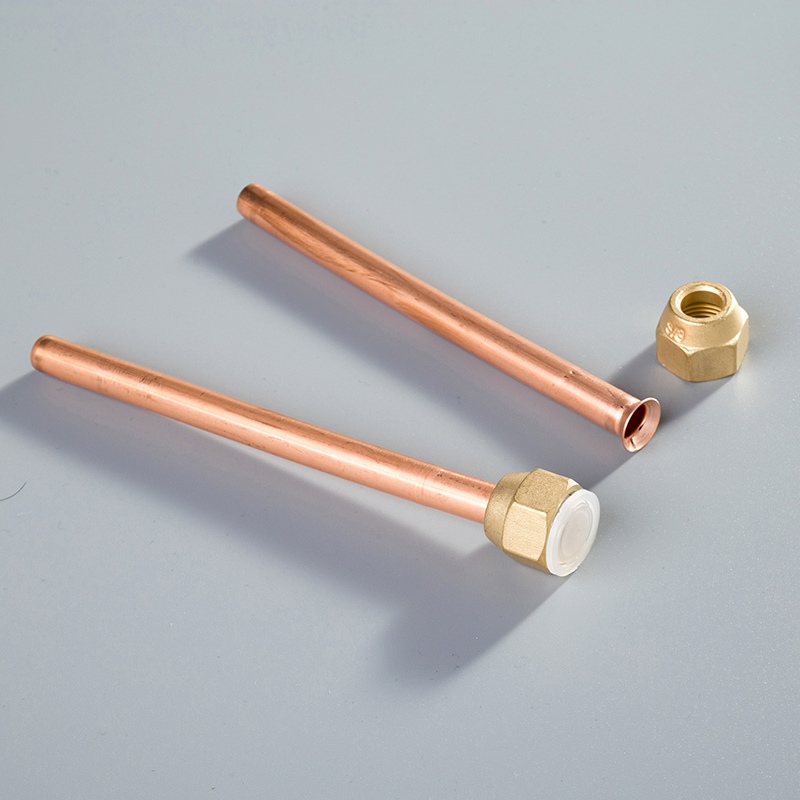How to Join Copper and Aluminum Pipes

How to Design and Install Copper Aluminum Connecting Pipes
The design and installation of copper aluminum connecting pipes hold significant importance in various industries, with applications ranging from HVAC systems to plumbing solutions. Understanding the seamless integration of these two metals is crucial for ensuring optimal performance and durability. As copper pipes dominate the HVAC & refrigeration sector, their compatibility with aluminum tubes opens doors to innovative designs and efficient installations. However, challenges such as galvanic corrosion and material compatibility must be carefully considered to guarantee long-term success in connecting these essential components.
Understanding the Materials
Properties of Copper
High Thermal Conductivity
Copper tubes and pipes are known for their high thermal conductivity, making them ideal for applications requiring efficient heat transfer.
They excel in conducting heat effectively, ensuring optimal performance in HVAC systems and other heat exchange processes.
Excellent Corrosion Resistance
Copper and copper alloys offer exceptional resistance to corrosion, safeguarding the integrity of the pipes even in challenging environments.
This corrosion resistance feature extends the lifespan of copper-based components, reducing maintenance needs.
Impressive Malleability
Copper and copper alloys exhibit impressive malleability, allowing them to be easily shaped and formed into various pipe configurations.
Their flexibility enables seamless installation and adaptation to different plumbing or HVAC system layouts.
Properties of Aluminum
Lightweight Advantage
Aluminum tubes stand out for their lightweight nature, providing ease of handling during installation processes.
The reduced weight of aluminum pipes simplifies transportation and maneuvering on-site, enhancing overall efficiency.
Corrosion Resistance Feature
Aluminum, when properly treated or coated, demonstrates notable resistance to corrosion, ensuring longevity in diverse operating conditions.
This corrosion-resistant property makes aluminum a reliable choice for applications where exposure to moisture is a concern.
Electrical Conductivity Capability
Aluminum's electrical conductivity allows it to efficiently conduct electricity when utilized in electrical applications or systems.
Its conductivity feature makes aluminum tubes suitable for specific industrial settings where electrical properties are crucial.
Preparation for Joining

Tools and Materials Needed
Pipe Cutter
Utilize a pipe cutter to precisely cut the copper and aluminum pipes to the required length without causing damage or deformation.
Deburring Tool
Employ a deburring tool to remove any sharp edges or burrs left on the pipe after cutting, ensuring a smooth surface for proper fitting.
Flux and Solder
Apply flux to clean the surfaces of the copper and aluminum pipes before soldering, promoting strong adhesion between the metals. Use solder to create a secure bond between the pipes.
Heat-Shrinkable Tubing
Use heat-shrinkable tubing to cover the joint after soldering, providing insulation and protection against external elements that could compromise the connection's integrity.
Super Alloy 1
Consider using Super Alloy 1, a versatile brazing rod, for joining copper and aluminum pipes. This alloy simplifies the joining process by effectively bonding the two metals together with high strength and durability.
Safety Precautions
Protective Gear
Prioritize safety by wearing appropriate protective gear, such as gloves, goggles, and aprons, to shield yourself from potential hazards during the joining process.
Ventilation
Ensure adequate ventilation in your workspace to disperse fumes generated during soldering or brazing, maintaining a safe environment for you and others nearby.
Handling Chemicals
Exercise caution when handling chemicals, including flux and solder. Follow manufacturer instructions carefully, store them properly, and avoid skin contact or inhalation to prevent any adverse effects on health.
Methods for Joining Copper and Aluminum Pipes

Brazing
Suitable flux and filler materials
HVAC/R manufacturers recommend using flux that is specifically designed for copper and aluminum to ensure a strong bond between the two metals.
The filler materials, such as Super Alloy 1, play a crucial role in brazing copper to aluminum, providing high strength and durability to the joint.
Step-by-step brazing process
Begin by thoroughly cleaning the surfaces of the copper and aluminum pipes to remove any contaminants that could affect the brazing process.
Apply the suitable flux evenly on both surfaces before carefully aligning the pipes together.
Heat the joint uniformly using a torch until reaching the brazing temperature, allowing the filler material to flow and create a solid connection.
Using Super Alloy 1
Super Alloy 1 simplifies the brazing process by effectively bonding copper and aluminum pipes with its unique composition.
This alloy ensures a reliable joint that can withstand varying temperatures and pressures, making it ideal for HVAC systems and plumbing applications.
Compression Fittings
Types of compression fittings
There are various types of compression fittings available, including straight couplings, elbows, tees, and adapters, offering versatility in connecting copper and aluminum pipes.
Each type is designed to provide a secure and leak-free connection without requiring soldering or brazing.
Installation process
To install compression fittings, start by cutting the copper and aluminum pipes cleanly using a pipe cutter.
Slide the compression nut onto each pipe followed by the ferrule. Insert both pipes into the fitting body and tighten the nut securely to create a watertight seal.
Threaded Connections
Threading tools and techniques
Utilize threading tools such as die heads or ratcheting pipe threaders to create precise threads on both copper and aluminum pipes for threaded connections.
Proper threading techniques ensure compatibility between components when assembling piping systems.
Sealing methods
After threading both pipes accordingly, apply an appropriate sealing compound or tape on the male threads before joining them together.
Tighten the threaded connection firmly using wrenches to prevent leaks or loosening over time.
Soldering
Low-temperature soldering with Super Alloy 1
To ensure a secure connection between copper and aluminum pipes, low-temperature soldering with Super Alloy 1 offers a reliable solution. This method involves carefully applying heat to the joint while introducing the solder alloy, which melts at a lower temperature than traditional solders. The low-temperature characteristic of Super Alloy 1 prevents overheating, minimizing the risk of damaging the aluminum pipe during the soldering process.
Utilizing Super Alloy 1 for soldering provides a strong bond between copper and aluminum, enhancing the overall integrity of the joint. The unique composition of this solder alloy promotes excellent adhesion, ensuring a durable connection that can withstand varying pressures and temperatures within HVAC systems or plumbing installations.
Using KappAloy9™ solder
Another effective option for joining copper and aluminum pipes is by using KappAloy9™ solder, renowned for its high tin content. This specialized solder consists of 91% Tin and 9% Zinc, offering exceptional bonding properties suitable for connecting these two metals seamlessly. When heated to the appropriate temperature, KappAloy9™ creates a robust bond that enhances the structural stability of the joint.
Employing KappAloy9™ solder in joining copper and aluminum components ensures a reliable connection that resists corrosion and maintains electrical conductivity where needed. Whether in HVAC/R manufacturing or plumbing applications, this solder provides a versatile and efficient solution for integrating copper and aluminum pipes effectively.
Testing and Inspection
Leak Testing
Pressure testing
To ensure the integrity of the joint between copper and aluminum pipes, pressure testing is conducted. This test involves subjecting the connected pipes to varying levels of pressure to assess their ability to withstand fluid flow without any leaks. By pressurizing the system, manufacturers can verify the reliability of the joint under operational conditions, ensuring optimal performance in HVAC systems and plumbing installations.
Soap solution method
Another common technique for leak testing involves using a soap solution to detect any potential leaks in the joint. The soap solution is applied to the connection area, and as pressure is introduced into the system, bubbles will form at the site of any leaks. This visual indication allows technicians to identify and address any issues promptly, guaranteeing a secure and leak-free connection between copper and aluminum components.
Visual Inspection
Checking for proper alignment
Visual inspection plays a crucial role in verifying the alignment of copper and aluminum pipes after joining them. Technicians carefully examine the connection point to ensure that both pipes are correctly aligned without any misalignment or gaps. Proper alignment is essential for maintaining structural integrity and preventing potential leaks or inefficiencies in the system.
Ensuring secure connections
During visual inspection, technicians also focus on ensuring that copper and aluminum pipes are securely connected. By visually examining the joint, they check for signs of gaps or loose fittings that could compromise the connection's strength. Ensuring a tight and secure fit between copper and aluminum components is vital for maintaining system efficiency and preventing issues such as leaks or disconnections.
Recapping the essential points highlighted throughout the blog, ensuring a seamless connection between copper and aluminum pipes is vital for efficient HVAC systems and plumbing solutions. Emphasizing the significance of employing proper techniques and safety measures during the joining process is crucial to guarantee long-term durability and performance. In cases where expertise is needed, seeking professional assistance can further enhance the quality and reliability of the connection. Remember, precision and care in connecting copper and aluminum pipes pave the way for robust installations in various industrial applications.
See Also
Beginner's Guide: Easy Steps for Soldering Copper Pipes
Simple Guide: Attaching Compression Fittings to Copper Pipes
Expert Advice: Simple Techniques for 1 1/2 Copper Pipes


